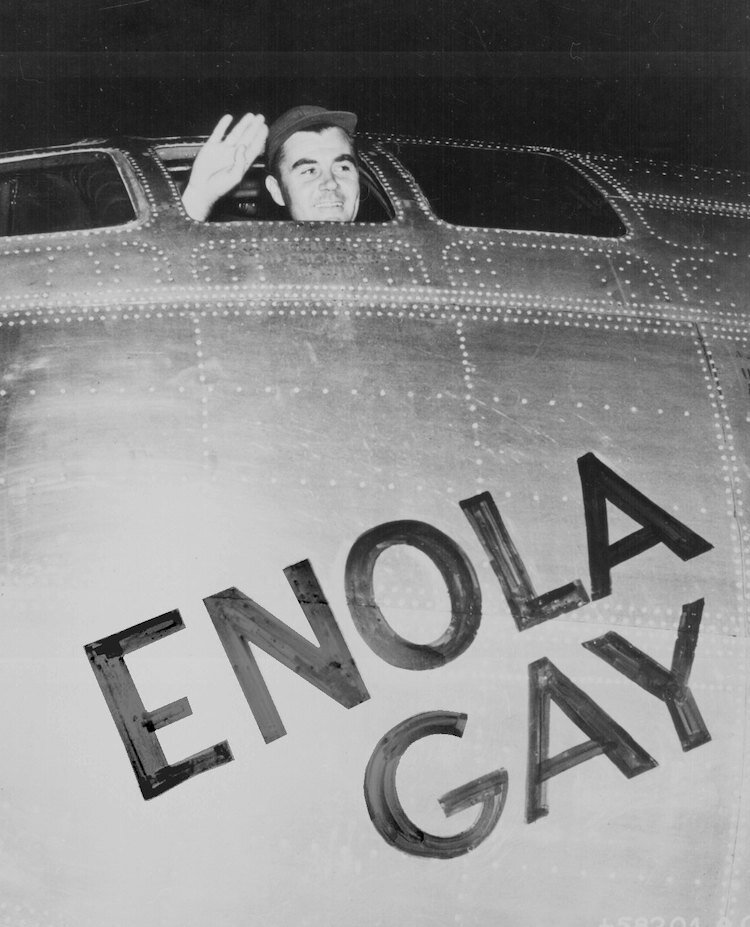World War II
Adolf Hitler (1889 - 1945) in Munich in the spring of 1932.
Heinrich Hoffmann/Archive Photos/Getty Images
In December, 1939, the Nanjing Massacre, the Japanese Army targeted Chinese people.
Signature Cultural Communication/FOTOE, 10161413
MS St Louis, carrying more than 900 Jewish refugees, attempting to dock in Miami's port and stopped by officials, June 1939. The caption under the photo the photo in The Miami Herald reads, Anchor Aweigh. This picture was taken just as the ship gathered headway. In the foreground are the Cuban police ‘suicide guard’.
William B. Stapleton, Miami Herald, pg. 13, June 3,1939.
Aitape, New Guinea. 24 October 1943. A photograph found on the body of a dead Japanese soldier showing NX143314 Sergeant (Sgt) Leonard G. Siffleet of "M" Special Unit, wearing a blindfold and with his arms tied, about to be beheaded with a sword by Yasuno Chikao. The execution was ordered by Vice Admiral Kamada, the commander of the Japanese Naval Forces at Aitape. Sgt Siffleet was captured with Private (Pte) Pattiwahl and Pte Reharin, Ambonese members of the Netherlands East Indies Forces, whilst engaged in reconnaissance behind the Japanese lines. Yasuno Chikao died before the end of the war.
Australian War Memorial, ID Number 101099.
French civilian’s tribute to an American soldier who fell in the crusade to liberate France from Nazi domination. Carentan, France, June 17, 1944.
National Archives and Records Administration, Washington, D.C., National Archives Identifier, 531191.
U.S. Marines of the 28th Regiment, 5th Division, raise the American flag atop Mount Suribachi in Iwo Jima, Japan on Feb 23, 1945.
AP Photo/Joe Rosenthal
Soviet soldiers raising a flag over the Reichstag, May 2, 1945. The photo is a controversial re-enactment of an earlier flag raising.
Yevgeny Khaldei/LOC
Colonel Paul Tibbets waving from the Enola Gay’s cockpit. On 6 August, 1945, this Boeing B-29 dropped an atomic bomb, code-named, Little Boy, on Hiroshima, Japan.
Armen Shamlian/Universal History Archive/Universal Images Group via Getty Images
Mushroom cloud over Hiroshima after the dropping of Little Boy. Photographed by US Army Air Force soldier, Bob Caron, 6 August, 1945.
The National Archives and Records Administration (NARA), National Archives Identifier 542192.
Mushroom cloud over Nagasaki after the dropping of Fat Man from a US B-29 Superfortress, 9 August, 1945.
The National Archives and Records Administration (NARA), Photograph by Charles Levy, US Air Force Soldier. National Archives Identifier 535.
Japanese boy standing at attention after having brought his dead younger brother to a cremation pyre, 1945.
Joe O'Donell, US Marine Corps, September 1, 1945, Nagasaki
The sign above the main gate of the Nazi concentration camp Auschwitz I in Poland, which reads "Arbeit macht frei" (Work Sets You Free), circa 1945.
Associated Press























